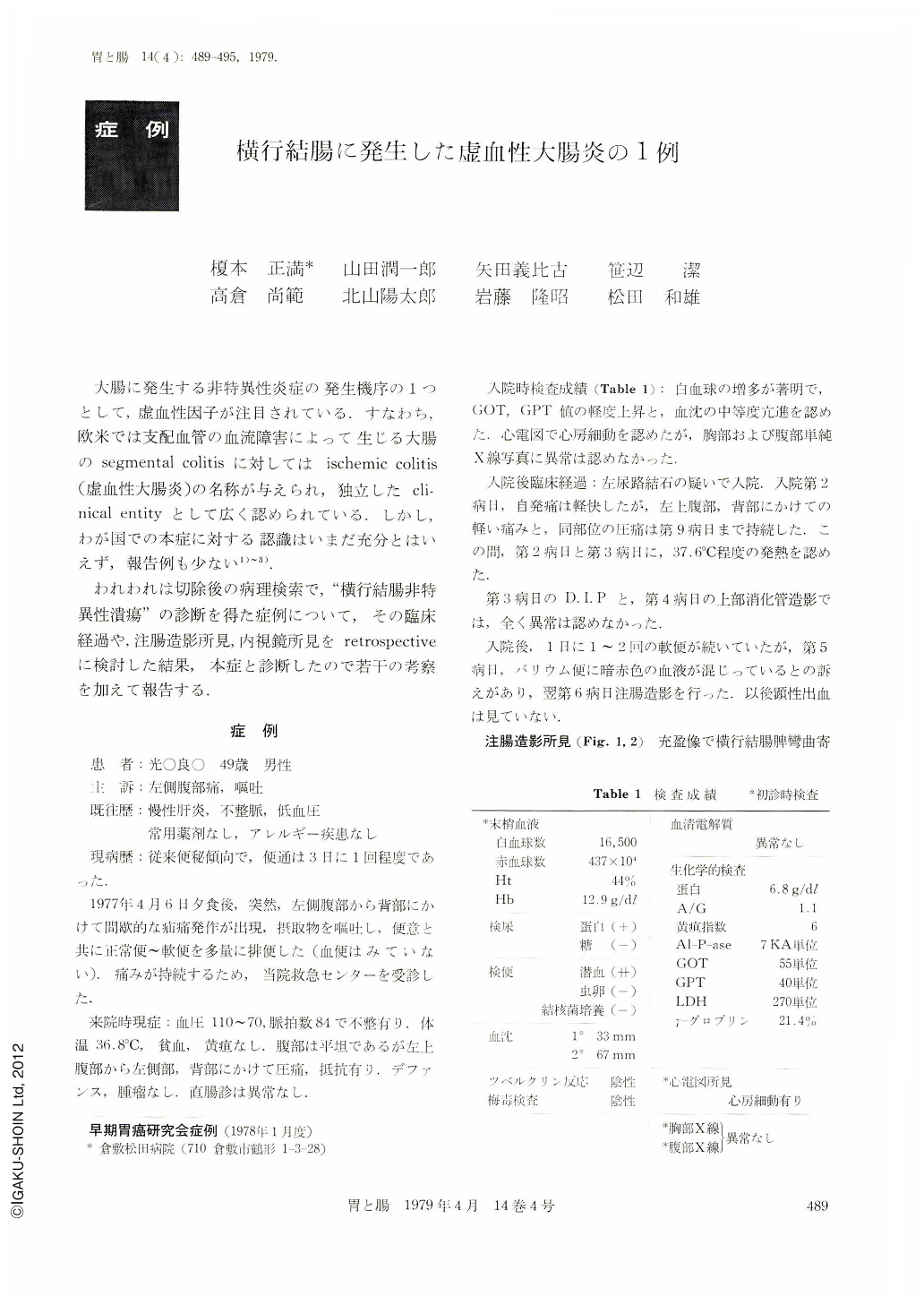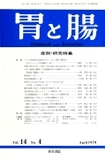Japanese
English
- 有料閲覧
- Abstract 文献概要
- 1ページ目 Look Inside
大腸に発生する非特異性炎症の発生機序の1つとして,虚血性因子が注目されている.すなわち,欧米では支配血管の血流障害によって生じる大腸のsegmental colitisに対してはischemic colitis(虚血性大腸炎)の名称が与えられ,独立したclinical entityとして広く認められている.しかし,わが国での本症に対する認識はいまだ充分とはいえず,報告例も少ない1)~3).
われわれは切除後の病理検索で,“横行結腸非特異性潰瘍”の診断を得た症例について,その臨床経過や,注腸造影所見,内視鏡所見をretrospectiveに検討した結果,本症と診断したので若干の考察を加えて報告する.
A study has been made of a case of ischemic colitis. We have arrived at the diagnosis after due retrospective investigation. Initially it was diagnosed as “non-specific ulcer” based on the pathologic examination after excision.
The patient, a man aged 49, had a previous history of arrhythmia and hypotesion. He was constipated before the onset of pain. After eating evening meal, he had a sudden bout of pain in the left-hand side of the abdomen in addition to vomiting. The initial examination showed tenderness and resistance in the LUQ. BSD was accelerated with leucocytosis. ECG showed atrial flimmern. On the 10 th day of admission, complaints and objective findings disappeared. In the meantime, transient melena was seen on the fifth day, and barium enema on the sixth day showed about nine cm long thumb printing in the transverse colon in the side of the splenic flexure. Endoscopy on the ninth day of admission revealed there circumferentially reddening, edema, multiple erosions and shallow ulcer. Biopsical diagnosis was “non-specific ulcer.” Peroral X-ray examination of the digestive tract performed on the 16 th day showed more manifest tubular narrowing. Partial colectomy done on the 29 th day revealed a round ulcer on the posterior wall on the side of the mesentery attachment. Histologically, it was an ulcer Ul-Ⅱ showing distinct granulation and regeneration of the blood vessels. Pathologic diagnosis was “non-specific ulcer.”
The present case can be interpreted as a series of ischemic changes by (1) a preliminary stage of signs and symptoms such as arrhythmia, hypotension, constipation and over-eating, (2) peculiar clinical course suddenly developed by abdominal pain with transient and characterized by the disappearance of complaints and objective findings, (3) peculiar barium enema findings represented by thumb-printing or pseudo tumors, and (4) pathologic findings of “non-specific ulcer.” We have thus arrived at a diagnosis of non-occulusive ischemic colitis.

Copyright © 1979, Igaku-Shoin Ltd. All rights reserved.


